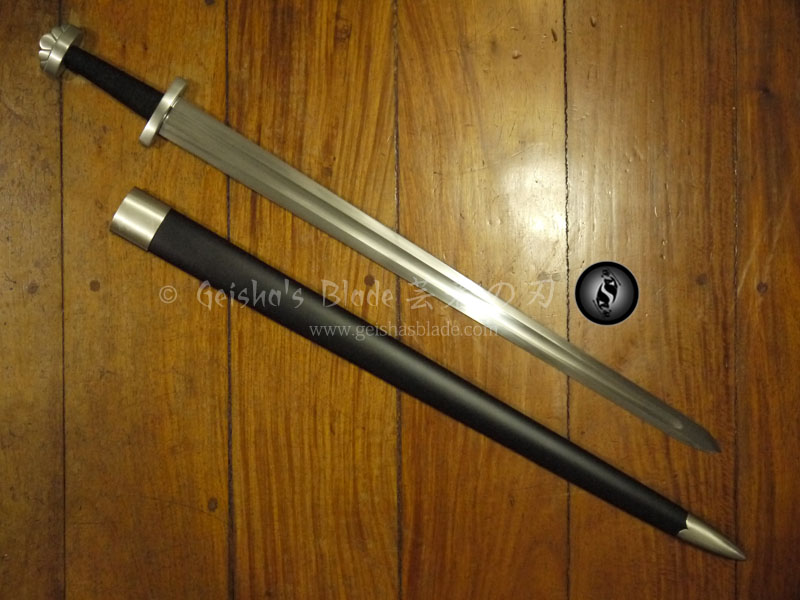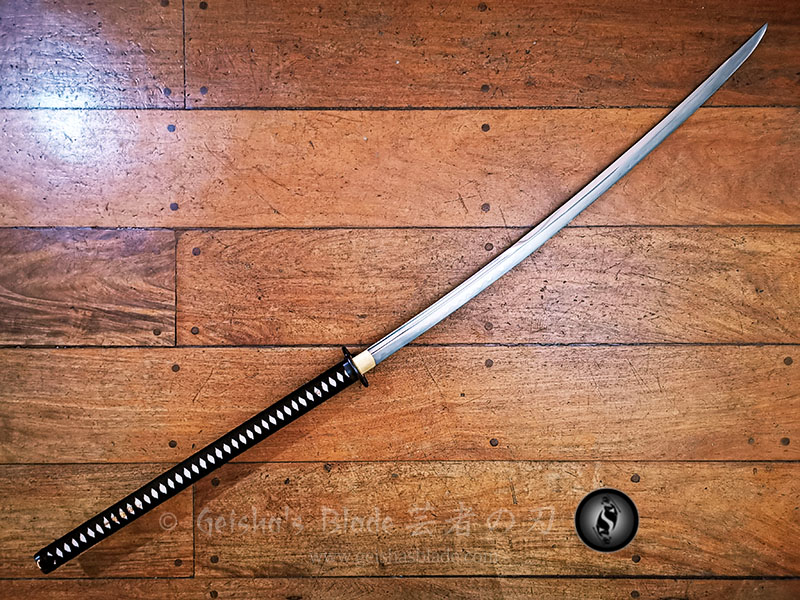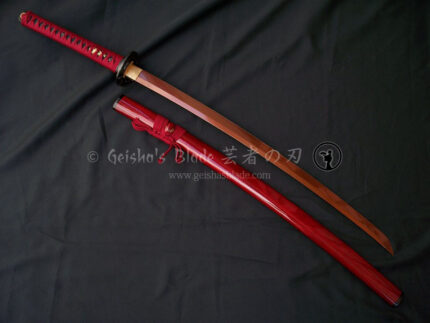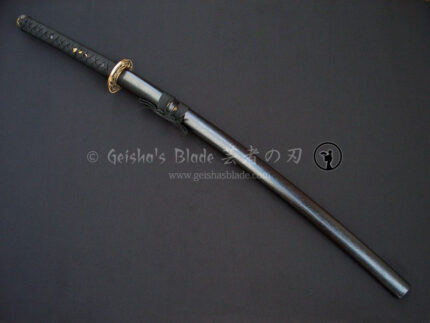The two major Japanese pole arms are the yari (double-edged spear), and the naginata (spear with curved, single-edged blade). Naginata are thought to have been used since the Heian period (782 to 1180). In times of war, the naginata was used in battle, and it was the favorite weapon of the Sohei, the warrior-monks. In the Edo period (1648 – 1852) the naginata became the preferred weapon of women, for instance the female guards of the Ōoku, the “harem” of the Shogun, were armed with naginata.
Nagamaki is a term that, strictly speaking, only applies to a special style of mounting a naginata. It was in vogue from the middle of the Muromachi period (1390 – 1570) until the Momoyama period (1571 – 1647). “Nagamaki” means “long wrap”, and refers to the fact that the shaft is wrapped like a sword handle. Another term used is “nagadachi” (long tachi), and some argue that it’s actually only a variant of the nodachi, with longer handle and shorter blade in comparison.
SPECIFICATIONS
• Blade Material: 1060 carbon steel (mono-steel)
• Edge: Fully-sharpened
• Treatment: Hand Forged, Through Hardened, Heat Treated & Tempered, Water Quenched
• Blade Length: 33.5 inches (without habaki)
• Tsuka: 23 inches wood
• Overall length w/o saya: 57.75 inches
• Saya: 36.25 inches wood ishime finish (black pebbled)
• Tsuba / Fuchi / Kashira: Iron
• Habaki / Seppa / Menuki: Brass
• Tsukaito / Sageo: Black silk
• Mekugi: 2 bamboo pegs
• Samegawa: Real ray skin panels
• Nakago: Full tang
• Hamon: Acid etched gunome (zigzag) pattern
NOTES
• Specs may vary slightly from sword to sword
• Can be disassembled
• Includes cloth bag
• Packaging: carton box
Although nagamaki is basically only a style of mounting, there are certain characteristics that make a naginata a nagamaki even without the wrapping. The shaft is rather short, about four feet long, and often there’s a tsuba. The blade is usually longer than a naginata and has less curvature. Although the blade is constructed like a broad, heavy katana, the mune (back of the blade) is sometimes thinned along the back to reduce weight, thus giving the blade a more pronounced diamond cross-section.
In the peaceful Edo period many naginata and nagamaki were modified to be worn as swords, the so-called naginata-naoshi and nagamaki-naoshi respectively. While most naginata were made into wakizashi, nagamaki were often long enough to being converted into a katana.
Source: Guido Schiller at Sword Forum International
Our Nagamaki is a perfect partner of our Naginata Naoshi Wakizashi, since both have the same blade shape and the same style of fittings.
























































Reviews
There are no reviews yet.